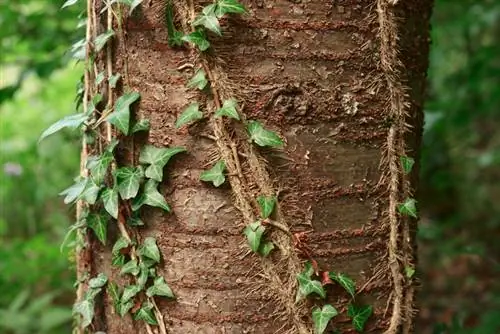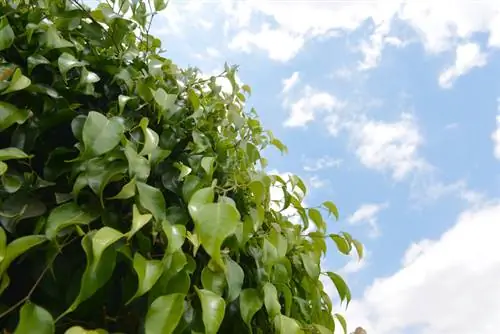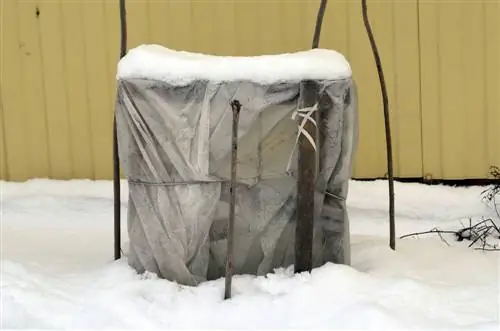- Author admin [email protected].
- Public 2023-12-16 16:46.
- Last modified 2025-01-23 11:22.
Linds grow into impressive trees, which unfortunately can cause problems in the garden. The reason for this is the underground root system, which is difficult to control. But with a few tricks you don't have to do without the deciduous trees.

How deep and wide do lime roots grow?
Linds (Tilia species) are heartroots whose root system grows to a maximum depth of 1.5 meters and spreads irregularly in the ground. In the garden, they can cause problems if planted too close to walkways or utilities. These problems can be minimized through regular tree pruning and root containment.
Root growth
Root development does not differ between winter and summer linden trees. Tilia cordata and platyphyllos are heartroot plants that develop an irregular root system. The root system reaches manageable dimensions in horizontal and vertical orientation because the roots grow short and stocky. They branch out early and form a high proportion of fine roots, so that the entire ball grows compactly.
The cardiac root system:
- Mixed form of taproot and flat spreading lateral roots
- hemispherical appearance
- reminiscent of the shape of a heart in cross section
Linde trees have such deep roots
If you want to plant a linden tree in the garden, you should be familiar with the rooting depths. The roots of Tilia species reach a maximum depth of 1.5 meters after 20 to 30 years if the soil consists of sandy loam. With loess clay the expansion is somewhat more limited.
On sandy surfaces, gravel and gravel, ranges of up to 0.8 meters are common. Due to poor aeration, heavy clay and loamy soils ensure that the trees mainly have shallow roots in the topsoil and only have weak access to the lower soil layers.
Avoid problems in the garden
Linds have good stability in storms because of their medium rooting depth. However, the linden tree's roots can quickly cause problems in the garden as soon as it comes into contact with underground pipes or the tree grows too close to sidewalks. Slabs can lift over the years as the roots spread through the ground and damage to power cables and water pipes cannot be ruled out.
Preventive measures
It is possible to cut the root ball of planted trees. To do this, the tree crown must first be thinned out and reduced in size. A radical method is the head cut. The root system is then exposed and contained. Since this intervention can negatively affect the stability of the tree, you should hire a specialist company for old trees. Cables can be shielded from the roots with root protection sheets (€22.00 at Amazon).
Keep the tree small
During the growing season, regularly remove branches from the upper and outer areas of the crown. In this way you redirect the growth to young shoots. Make sure that the tree retains enough buds in the inner and lower parts of the crown. In this way you prevent uncontrolled sprouting in unwanted places. Repeat this measure about two to three times until summer. Through the intervention you keep the expansion within limits, which is also noticeable in the root growth.
Tip
The period between spring and early summer is recommended for this pruning measure, when the tree already has leaves.






